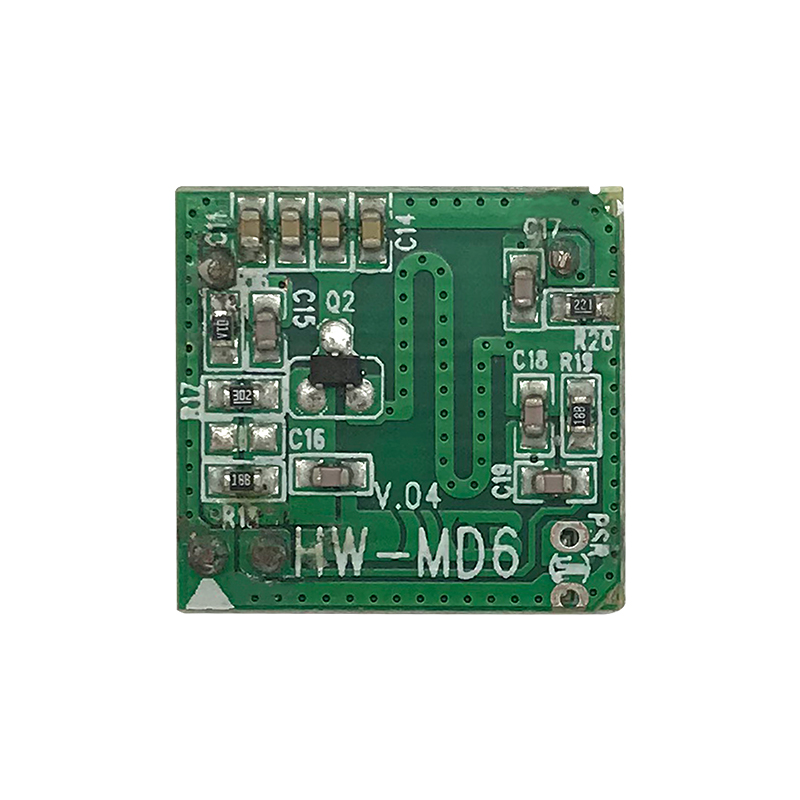 1004,West-CBD,No.139 Binhe Rd,Futian District,Shenzhen, China Post Code:518048
1004,West-CBD,No.139 Binhe Rd,Futian District,Shenzhen, China Post Code:518048
 +86-18682200597
+86-18682200597
 sales@szhaiwang.com
sales@szhaiwang.com
 1004,West-CBD,No.139 Binhe Rd,Futian District,Shenzhen, China Post Code:518048
1004,West-CBD,No.139 Binhe Rd,Futian District,Shenzhen, China Post Code:518048
 +86-18682200597
+86-18682200597
 sales@szhaiwang.com
sales@szhaiwang.com
source:Industry News release time:2022-01-28 Hits: Popular:Infrared sensing module

A radio frequency sensor is a device that converts light signals into electrical signals. Its working principle is based on the photoelectric effect. The photoelectric effect means that when light is irradiated on some material, the electrons of the material absorb the energy of the photon and the corresponding electric effect occurs. According to the different phenomena of photoelectric effect, the photoelectric effect is divided into three categories: external photoelectric effect, internal photoelectric effect and photovoltaic effect. Photoelectric devices include phototubes, photomultiplier tubes, photoresistors, photodiodes, phototransistors, and photocells. Analyzed the performance and characteristic curves of optoelectronic devices
Chinese name: RF sensor Composition: light source, optical path and photoelectric element
Foreign name: photoelectric sensor/micro sensor Purpose: The measured change is converted into a change in optical signal
Subject: Physics Principle: Photoelectric Effect
Sensor overviewedit
The radio frequency sensor is generally composed of two parts: a processing path and a processing element. The basic principle is based on the photoelectric effect, which converts the measured changes into optical signal changes, and then further converts non-electrical signals into electrical signals with the help of photoelectric elements. The photoelectric effect refers to illuminating an object with light, which can be regarded as a series of photons with a certain energy bombarding the object. At this time, the energy of the photon is transferred to the electron, and the entire energy of a photon is absorbed by one at a time. When the electron is absorbed, the state of the electron will change after it gets the energy transmitted by the photon, so that the object irradiated by the light produces a corresponding electric effect. The photoelectric effect is usually divided into three categories: (1) The phenomenon that can cause electrons to overflow the surface of the object under the action of light is called the external photoelectric effect, such as photoelectric tube, photomultiplier tube, etc.; (2) The phenomenon that can make the object under the action of light The phenomenon that the resistivity changes is called the internal photoelectric effect, such as photoresistors, phototransistors, etc.; (3) The phenomenon that an object generates a certain directional electromotive force under the action of light is called the photovoltaic effect, such as photovoltaic cells, etc.
The photoelectric detection method has the advantages of high accuracy, fast response, non-contact, etc., and has many measurable parameters. The sensor has a simple structure and flexible forms. Therefore, the photoelectric sensor is widely used in detection and control.
The radio frequency sensor is a key component for photoelectric conversion in various photoelectric detection systems. It is a device that converts optical signals (visible and ultraviolet laser light) into electrical signals
The photoelectric sensor is a sensor that uses a photoelectric device as a conversion element. It can be used to detect non-electrical physical quantities that directly cause changes in light quantity, such as light intensity, illuminance, radiation temperature measurement, gas composition analysis, etc.; it can also be used to detect other non-electrical quantities that can be converted into light quantity changes, such as part diameter, surface roughness, Strain, displacement, vibration, speed, acceleration, as well as the recognition of the shape and working state of the object, etc. Photoelectric sensors have the characteristics of non-contact, fast response, and reliable performance, so they are widely used in industrial automation devices and robots. The emergence of new optoelectronic devices, especially the birth of CCD image sensors, has opened a new page for the further application of radio frequency sensors.
Read recommendations:
Popular Recommended Products
HW-XC901 microwave sensor module
2021-12-07Z007
2021-11-27PIR Lens 7704-2
2021-12-09PIR203S Analog sensor
2021-12-09PIR Lens 7601-15
2021-12-09PIR Lens 8307-2
2021-12-09PIR Lens 8006
2021-12-09RX-50
2021-12-09BISS0001
2021-11-27PIR Lens 8308-7
2021-12-09PIR Lens 8034
2021-12-09Talk about the characteristics of radio frequency sensors
2022-01-13Temperature sensors in BMS batteries of new energy vehicles.Automatic machine mirror
2023-09-08NTC chip for toilet sensing temperature
2022-09-14The main parameters of the power thermistor NTC.Microwave Sensor Module Radar Sensor
2022-06-09NTC temperature sensor for fruit tree seedling cultivation and irrigation equipment
2023-09-21Lithium battery NTC temperature probe.Pyroelectric infrared sensor module Processor
2023-04-13The application of NTC thermistor in automation equipment.Automatic machine mirror
2023-03-28What is the difference between proximity switch and radio frequency sensor
2022-01-13NTC thermist resistance heat time constant.Human Body Temperature Monitoring Sensor Factory
2023-04-15New miniature FIR sensor
2022-10-24
szhaiwang4@hotmail.com
+86-18682200597
sales@szhaiwang.com